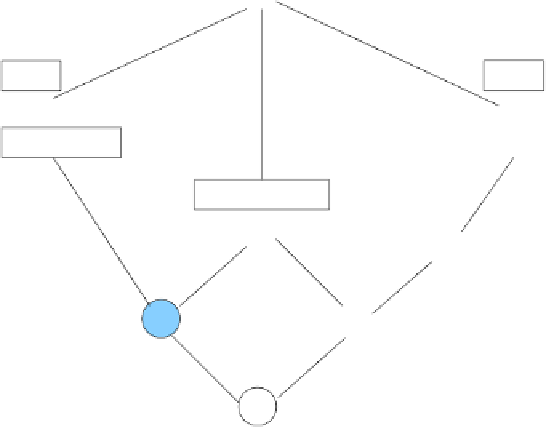Information Technology Reference
In-Depth Information
sound
paper
VIDEOTAPE
BOOK
free-distribution
timely
MAGAZINE
CD
NEWSPAPER
Fig. 12.
Concept lattice for the example context in Fig. 11
An attribute
if and only if there is an downwards
leading path from the node named by
a
has an object
o
a
to the node named by
o.
Hence, we recognize from the line diagram in Fig. 12 that the node “MAGA-
ZINE” has exactly the attributes “timely” and “paper”, and the node “timely”
has exactly the objects “MAGAZINE” and “NEWSPAPER”. As a consequence
of the reading rule, we can easily read from the line diagram the extent and the
intent of each concept by collecting all objects below respectively all attributes
above the node of the given concept. Hence, the object concept “MAGAZINE”
has the extent “MAGAZINE” and “NEWSPAPER” and the intent “timely” and
“paper”. The extent of the top concept (
)isalwaysthesetofallobjects,and
the intent of the bottom concept (
) is always the set of all attributes. While
in the context of Fig. 11a, the intent of the most general concept (
⊥
)doesnot
contain any attribute. In other contexts, it may occur that the intent of
is
not empty. For example, if we add to the given context the attribute “media”
with crosses in each row in Fig. 11a, then the top concept would be the attribute
concept of “media” and the intent of
would contain just the attribute “media”.
4.2
Early Aspects Analysis Via Formal Concept Analysis
Although they originated from separate disciplines, RGT and FCA share a com-
mon underlying structure: a cross-reference table. This allows these two tech-
niques to be incorporated seamlessly. In our approach, the consolidated and
reconciled repertory grid provides the cross-reference table from which one can








Search WWH ::

Custom Search